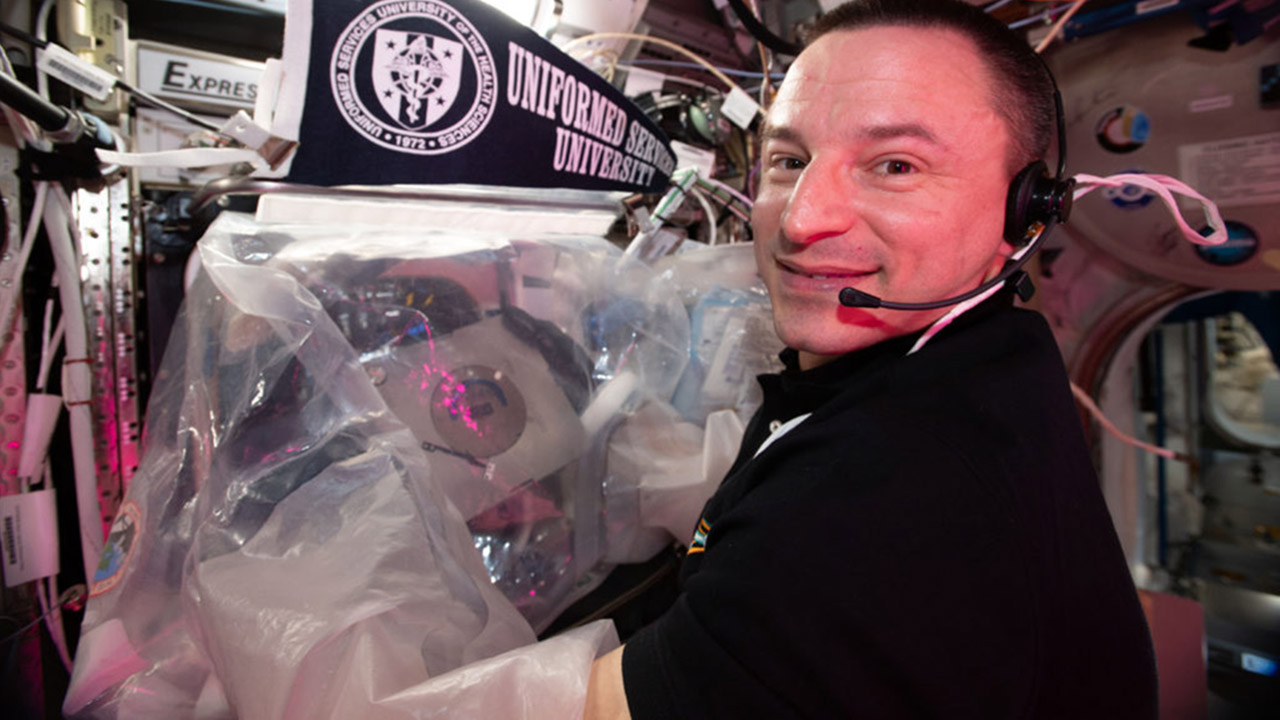Microdispensing specialist nScrypt and aerospace company TechShot have successfully completed the first functional 3D bioprinting experiment in space. Using the BioFabrication Facility (BFF) on board the ISS, with the help of the non-profit Geneva Foundation and the Uniformed Services University of the Health Sciences (USU), they 3D bioprinted a human knee meniscus as part of the 4D Bio3 program. The breakthrough experiment is part of a long term plan to one day manufacture advanced soft tissues and whole organs in the microgravity of space.

3D bioprinting in space
The BFF has been documented as the world’s first 3D printer capable of fabricating human tissue in space. It uses pluripotent stem cells to generate viable tissue by precisely organizing fine layers of bioink – a few microns across – in specified patterns. The stem cells are nurtured and differentiate into the desired human cells over time, eventually forming into cultures of tissue. This is extremely difficult (impossible thus far) to accomplish on Earth due to the relatively strong force of gravity. On Earth, soft tissues collapse under their own weight, leaving researchers with a fluid mess of jumbled up cellular connections. On the ISS, where Earth’s gravitational pull is much weaker, 3D printed soft tissues are able to maintain their shape.
Dr. Joel Gaston, Senior Research Scientist on the experiment, stated: “The manufacture of soft human tissue, such as hearts and other organs, has proven difficult due to the conflicting needs for bioinks to be printable, biologically relevant, and possess the desired tissue mechanical properties.”
To meniscus and beyond
According to the Geneva Foundation, the meniscal injury is one of the most common orthopedic injuries in the military. When the knee meniscus tears, it loses its shock absorbing functionality which can result in arthritis and knee pain. Meniscal injuries were found to be 10x higher in military personnel than the general population, which has been attributed to the strenuous physicality of military service. By further developing the 3D printed meniscus research and eventually bringing it to other harsh environments on Earth, the researchers could use it to help U.S. service members stationed in remote locations away from ‘homeland’ medical resources.
Manufacturing on Demand
Dr. Vincent Ho, Director of the 4D Bio3 program, explains: “Our Fabrication in Austere Military Environments (FAME) program explores the challenges of 3D printing health-related products in various remote settings in which our service members are often deployed. We successfully 3D printed surgical instruments, bioactive bandages, anatomic models and human meniscus tissue last summer in our first pilot study performed in the desert heat of Africa. In this second pilot study, we anticipate learning valuable lessons on the challenges and benefits of 3D biofabrication of human meniscus in space on the ISS. We have future plans to perform similar experiments in the jungle, aquatic, arctic and high-altitude settings.”

The BFF was initially launched in July of 2019, and has received a number of upgrades over the course of a year. Earlier in 2020, the 3D BFF was fitted with a set of new 3D printed ceramic fluid manifolds to replace the previously used printed polymers. The manifolds are used to supply the printed tissues with the nutrients they require to grow into usable patches. Elsewhere in orbit, China has successfully completed its first set of microgravity 3D printing tests. The tests involved producing continuous carbon fiber reinforced polymer composites, something that’s reportedly never been done in zero-g.
* This article is reprinted from 3D Printing Industry. If you are involved in infringement, please contact us to delete it.
Author: Kubi Sertoglu

Leave A Comment